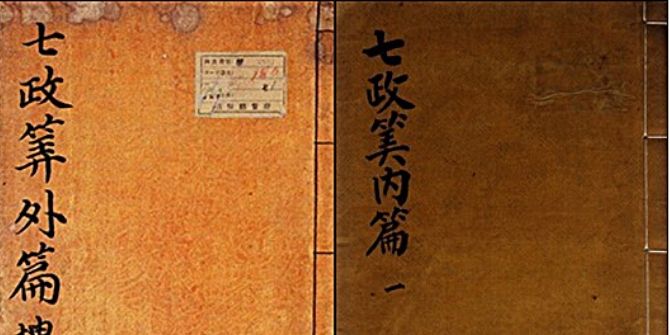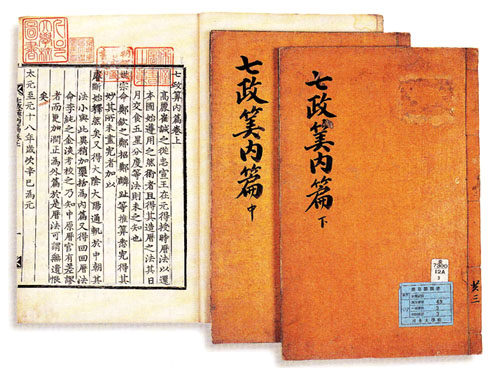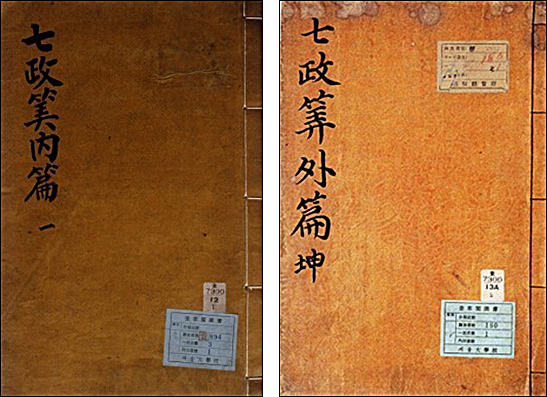Fans Shocked by a Sight in the Photo Posted by Suho EXO, Here's the Real Fact!
EXO-Ls were amused by a 'sight' in the photo uploaded by Suho.

Kapanlagi.com - There is much more to know about South Korea than just K-Pop and dramas. History, culture, and heritage are some of the many knowledge that can broaden our understanding of the Land of Ginseng.
This time, we will get to know about Chiljeongsan, which is the original Korean calendar system. This calendar was created in 1443, or the 15th year of King Sejong's reign during the Joseon Dynasty.
Chiljeong refers to the seven components that regulate the calendar system, including the Sun, Moon, Jupiter, Mars, Saturn, Venus, and Mercury. Chiljeongsan consists of two volumes. One volume uses the Chinese calendar system to calculate the positions of the seven celestial determinants related to Joseon. The other system uses the Islamic calendar.

Chiljeongsan © koya-culture.com
As reported from the Voluntary Agency Network of Korea (VANK) page, in the 15th century, creating a calendar system was a large-scale national project. It required talented astronomers and astronomical instruments. This is what prompted King Sejong to take firm steps.
First, he encouraged scholars to study the existing calendar systems in East Asia. Then, he asked them to study the Arab calendar system and then the world's leading astronomy. After training the astronomers, he developed infrastructure for astronomical observations by building the Royal Ganuidae Observatory in 1434. He didn't stop there, he also developed astronomical instruments such as Honcheonui (Celestial Globe) and Ganui (a simplified version of Honcheonui).
Furthermore, in 1437, Joseon designed many astronomical instruments, including Honsang (Celestial Globe), Gyupyo (Time Measuring Device), Jagyeongnu (Water Clock), Soganui (mini version of Ganui), Angbuilgu (Sundial), Cheonpyeongilgu (Portable Sundial), and Hyeonjuilgu (Portable Sundial).

Chiljeongsan © koya-culture.com
By using this device, Joseon was able to predict solar and lunar eclipses as well as astronomical changes much more accurately than before. This is what makes Chiljeongsan the peak of Joseon's astronomical advancement.
Joseon developed its calendar system by applying its knowledge of the Chinese and Islamic calendar systems to its own astronomical observations. The creation of this independent calendar system is an extraordinary achievement.
(kpl/mit)
Cobain For You Page (FYP) Yang kamu suka ada di sini,
lihat isinya
EXO-Ls were amused by a 'sight' in the photo uploaded by Suho.
It's hard to believe that these 10 popular dramas are already ten years old!
Against the mainstream, Eric Nam shares his phone number when bored at home.
Who is not captivated by the charisma possessed by Cha Eun Woo. Not only good-looking visually, but Cha Eun Woo also has a good personality. Curious? Let's check out the profile of Cha Eun Woo here. Don't miss it.
As a sunbae, it turns out Jimin BTS has a pet name for TXT.
Recently, Gyuri KARA shared her sweet story with her lover. So curious!
Have you ever imagined BTS as sellers in the market? These series of photos will definitely make you laugh out loud.
Here are a series of photos showing evidence that V BTS is getting handsomer from year to year. Curious about how he looks?
What kind of notice did Jimin BTS receive from the producer of the film 3 IDIOTS?
ARMY, are you ready to be thrilled again with BTS's new album this year?
Have you ever heard of Arirang, a Korean folk song? Here are some interesting facts about Arirang.
Joseonmal Keunsajeon (Great Korean Language Dictionary) which became the first Korean language dictionary. The dictionary has been lost since it was confiscated by the police during the Japanese Occupation from 1910 to 1945. What is its history like?